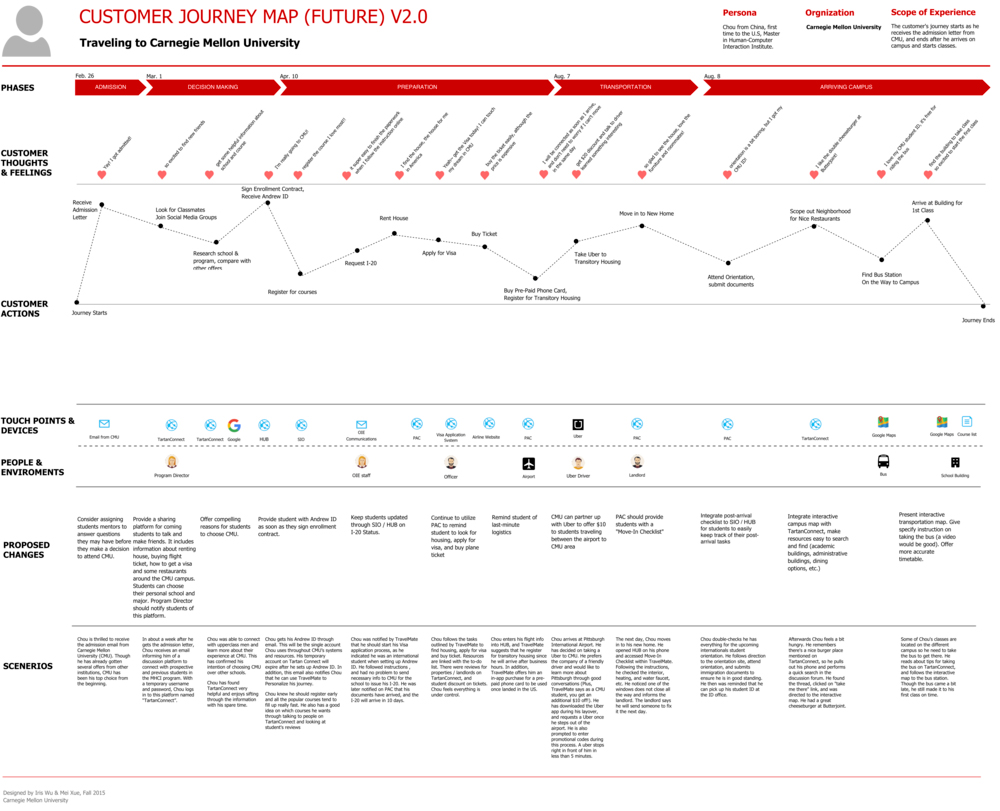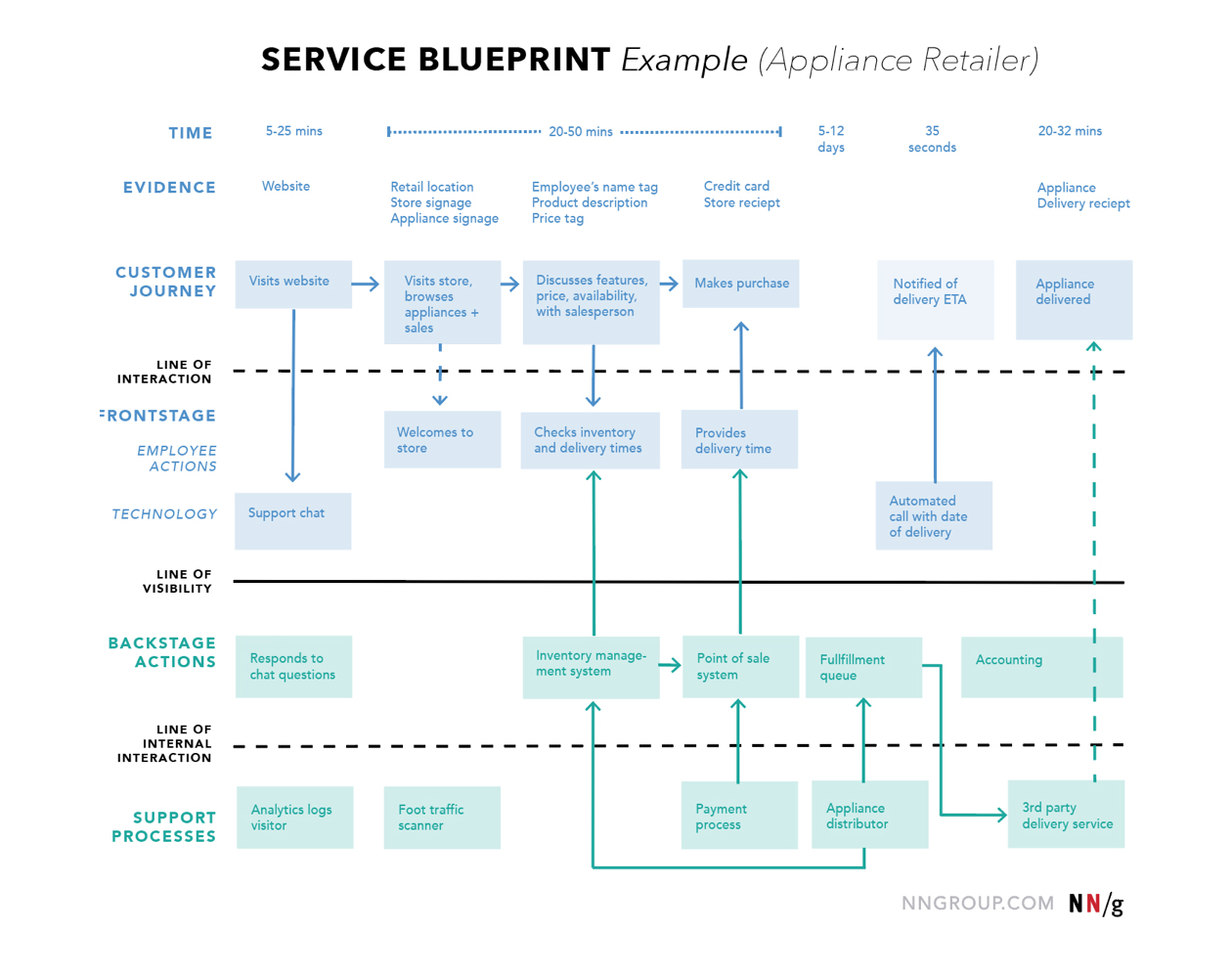Four Customer Journey Maps (And Why You Might Need Them All)
The most successful marketers understand how their customers arrive at a decision to buy—as well as how and where to meet a customer and become a trusted guide for the rest of their journey.
Getting to know your customer is just the first step. Understanding the journeys customers take to find, engage, and eventually advocate for your product is how you create a lasting relationships with them.
Customer journey maps help you move beyond surface-level assumptions about your customers and toward the heart of what drives their purchase behaviors.
[Check out our new 6-Step Consumer Engagement Guide co-produced with eTail]
Could You Use One of These Four Types of Customer Journey Map Templates?
Mapping your customers’ journeys gives you an opportunity to connect with stakeholders, refine your marketing strategy, and even work with the design team to create a memorable, visually appealing journey map to inform future initiatives. Here are four unique ways to create a customer journey map, and how each one can help you achieve your marketing objectives.
-
Current-State Customer Journey Map Template
Eighty-four percent of organizations are embracing a customer-centric model, and that means to land their business, you need an acute understanding of your customers’ current states. Current-state journey maps can help you accomplish this. This type of journey map outlines everything your customer currently does, thinks, and feels when interacting with your company.
Current-state journey maps can help you spot new opportunities to update your marketing strategy and improve customer interactions with your brand. The map below was designed for a utility company’s customer journey. Note how it identifies risks and opportunities in the current customer state.
 “Current-state” customer journey maps outline everything your customer currently does, thinks, and feels when interacting with your company.
“Current-state” customer journey maps outline everything your customer currently does, thinks, and feels when interacting with your company. -
Day-in-the-Life Customer Journey Map Template
Day-in-the-life journey maps are similar to current-state journey maps, but help paint a more detailed image of your customer or prospect by including customer activities unrelated to your company.
This approach to customer journey mapping examines everything customers do, think, and feel within a specific area of focus—whether it involves your company or not. For example, a day-in-the-life journey map will tell you if your customer checks Instagram right away in the morning, or first dives into the news. It outlines the estimated time your customer spends at work, at home, watching TV, reading customer reviews … the list goes on.
These maps highlight existing pain points in your customers’ and prospective customers’ lives, helping you uncover new possibilities to drive innovation and meet customers’ changing needs.
When you know what a day in the life of your current customer looks like, you can more strategically update your communications approach to meet them where they are, and present them with an offer at the exact moment they’re ready to buy.
Here’s an example of a map that an airline or travel business might use. It includes both interactions with the business and relevant interactions with colleagues, friends and family.
 Source: tandemseven
Source: tandemseven
“Day-in-the-life” customer journey maps examine everything customers do, think, and feel within a specific area of focus—whether it involves your company or not. -
Future-State Customer Journey Map Template
As its name might suggest, a future-state journey map is a goal-setting map. It seeks to improve customer interactions by imagining what the most ideal interaction might look like, and identifying steps your company can take to reach that ideal.
Instead of detailing what your customers and prospects are currently up to, future-state journey maps illustrate what your customers will do, think, and feel as they interact with your business in an idealized future.
This type of journey map is most useful for communicating your vision for new products and services with internal and external stakeholders. For example, this map comes from a student project to demonstrate the effectiveness of a proposed solution:
 Future-state customer journey maps can help communicate goals and illustrate what your customers will do, think, and feel as they interact with your business in an idealized future.
Future-state customer journey maps can help communicate goals and illustrate what your customers will do, think, and feel as they interact with your business in an idealized future. -
Service Blueprint Customer Journey Maps
Think of the service blueprint as “bonus content” that ties together your customer journey and your business’ journey to meet that customer. This type of customer journey map starts with any of the other three maps, then layers on the systems required to be in place to deliver exceptional experiences.
These “systems” include employees, company best practices, technology, and process. Service blueprint customer journey maps help you move past understanding where your customers are now, to predicting where they will be in the future, anticipating their needs and how your product or service helps meet those needs.
Here’s an example from NNgroup that includes customer journey, customer-facing employees, and what happens behind the scenes:
 Source: tandemseven
Source: tandemseven
A service blueprint customer journey map starts with any of the other three maps, then layers on the systems required to be in place to deliver exceptional experiences.
Understand Your Customers to Understand Their Journeys
There’s no one right way to create a customer journey map. Depending on your industry and audience, one or all of the approaches above might be the right format for you and your internal teams, who are the end-users of the maps, after all.
And as more companies take a data-driven approach, they’re learning that often, customers can take many different, often surprising customer journeys. Sometimes, the emergence of trends in the paths your customers take will result in new customer experiences, packaging, or even new product offerings inspired by common customer journeys.
Once you’re ready to begin mapping the customer journey, a reliable customer data platform can help you get started. Successful customer mapping requires a clear, 360-degree view of your customers—and the right CDP will help you get there.
Learn how our enterprise CDP can improve your customer journey map. Request a demo today.
 “Current-state” customer journey maps outline everything your customer currently does, thinks, and feels when interacting with your company.
“Current-state” customer journey maps outline everything your customer currently does, thinks, and feels when interacting with your company.  Source:
Source:  Future-state customer journey maps can help communicate goals and illustrate what your customers will do, think, and feel as they interact with your business in an idealized future.
Future-state customer journey maps can help communicate goals and illustrate what your customers will do, think, and feel as they interact with your business in an idealized future.  Source:
Source: